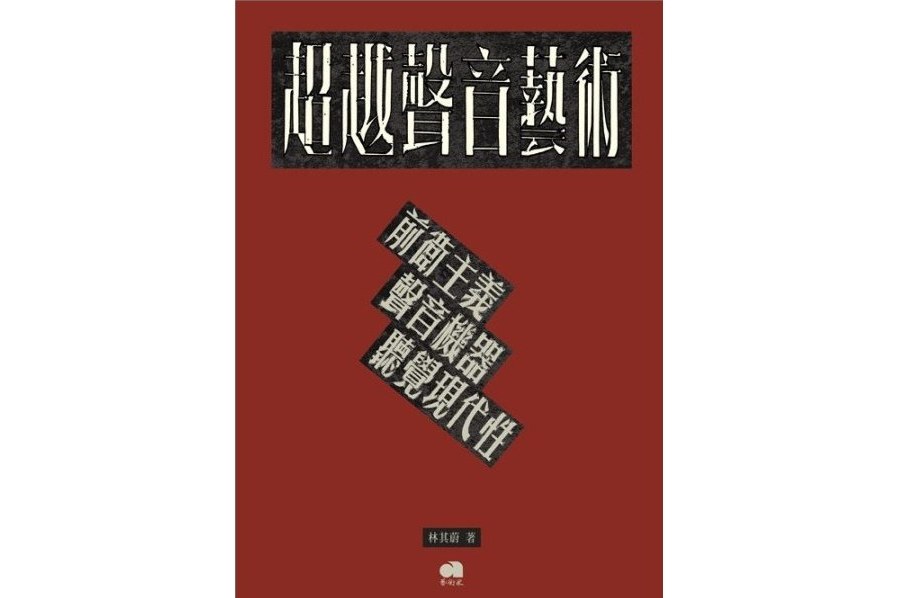內容簡介
超越聲音藝術:前衛主義、聲音機器、聽覺現代性
( Beyond Sound Art: The Avant Garde, Sound Machines, and the Modernity of Hearing )
感官特化分工是現代主體建構的知覺基礎,其中尤以視覺為其核心,無論文學史、藝術史,乃至音樂史的建構,皆由視覺文本出發。 在現代文化架構中,西方帝國與其殖民地的關係,可以由視覺主體的建構過程來理解。殖民地文化成了西方主體以視覺機器量測的對象物,西方在窺看的過程中讓自己成為主體,讓被窺看者的文化成為「落後」的參照體,並且依此模型來構造世界。緣此,「聲音」或可另闢蹊徑,提供解構視覺中心主義的思想資源。
本書由前衛藝術、現代音樂一直介紹到戰後的龐克搖滾與科技舞曲,並非為了構建某種新學門(如「聽覺藝術史」),以之對抗視覺藝術史的感官分工政治(如若依此邏輯,未來還要發明嗅覺藝術、觸覺藝術等新學門),而是反過來以聲音為方法,以聲音作為穿透視覺主體分工體系的象徵,質疑人文與科技的二分,文學、音樂、美術、劇場、建築專業的特化,反思「新媒體」、「跨領域」等等時興的學科統合計畫,而其方法在於擴張僵化的聽覺認知模式,還原聲音生產過程中的身體性與機械性,由聲音來追溯音樂、圖像、符號不可分割的源頭。
圖書目錄
本書使用方法 - 感謝名單 (Acknowledgements)
本書特有名詞解釋 (Glossary of Technical Terms)
簡介(Introduction)
前言(Foreword)
楔子(Prelude)
第一章 前衛之聲 (Sounds of Avant Garde)
1.未來主義(Futurism)
1.1.1.機器美學(Machine Aesthetics)
1.1.2.未來政治(Futurism Politics)
1.1.3.自由語言(Free-Word Poetry)
1.1.4.醜聞劇場(Success from Scandal)
1.1.5.噪音裝置(Motor-Noise Plastic Complexes)
1.1.6.噪音藝術(The Art of Noise)
1.1.7.未來廣播(La Radia: Futurist Radio Manifesto)
2.俄國前衛主義(The Russian Avant-Garde)
1.2.1.革命風潮與神秘主義(The October Revolution and Mysticism)
1.2.2.工業之聲(Industrial Sounds)
3.達達主義(Dada)
1.3.1.達達倫理學(Dada Ethics)
1.3.2.伏爾泰噪音(Noises from the Cabaret Voltaire)
1.3.3.原始主義(Primitivism)
1.3.4.史維特斯(Kurt Schwitters)
1.3.5.杜象(Marcel Duchamp)
1.3.6.音節詩(Phonetic Poetry)
1.3.7.達達與未來派(Dada and Futurism)
4.超現實主義(Surrealism)
1.4.1.非樂(No Music)
5.皮耶.夏飛、皮耶.亨利
(Pierre Schaeffer and Pierre Henry)
1.5.1.具象音樂的誕生(The Creation of Musique Concrète)
1.5.2.具象樂器(Machines of Musique Concrète)
1.5.3.皮耶.亨利(Pierre Henry)
6.許鐸克豪森(Karlheinz Stockhausen)
1.6.1.西北德廣播電台(WNDR)
1.6.2.許鐸克豪森(Karlheinz Stockhausen)
1.6.3.爭議人物 (The Controversial Figure)
7.謝納奇斯(Iannis Xenakis)
1.7.1.謝納奇斯傳奇(The Life of A Composer)
1.7.2.由建築到音樂(From Architecture to Music)
1.7.3. 微觀/巨觀的統一(Unifying the Micro and Macro Structures)
1.7.4.多媒體創作(Multi-Media Performance)
8.聲音詩(Sound Poetry)
1.8.1.文字解放/聲音解放(The Liberated Text / The Liberation of Sound)
1.8.2.電子聲音詩(Electronic Sound Poetry)
1.8.3.翁托南.阿鐸(Antonin Artaud)
1.8.4.威廉.伯洛斯(William Burroughs)
1.8.5.聲音詩的轉型(Sound Poetry Variations)
9.原生音樂 (Musique Brute)
1.9.1.原生音樂(Music Brute)
1.9.2.錄音科技(Recording Technology)
10.激浪前後(Fluxus and It’s Contemporaneousness)
1.10.1激浪噪音(Fluxux Noise)
1.10.2.通過儀式(Rites of Passage)
1.10.3.凱基(John Cage)
1.10.4.波依斯(Joseph Beuys) 1.10.5.克萊茵(Yves Klein)
1.10.6.拉蒙揚(La Monte Young)
1.10.7.白南準( Nam June Paik)
1.10.8.刀根康尚(Yasunao Tone)
1.10.9.佛斯帖爾(Wolf Vostell)
1.10.10.馬克雷(Christian Marclay)
11.龐克運動(Punk Movement)
1.11.1.藝術搖滾(Art Rocks?)
1.11.2.馬爾空.麥克萊倫(Malcolm McLaren)
1.11.3.自己做文化(DIY Culture)
12.工業音樂(Industrial Music)
1.12.1.景觀媒體(The Media Spectacles)
1.12.2.獨立組織 (Independent Organizations)
1.12.3.恐怖主義 (Media Terrorism)
1.12.4. 悸動軟骨(Throbbing Gristle)
1.12.5. 負面之國(Negative Land)
1.12.6. 萊巴哈(Laibach)
13.日本噪音(Japanese Noise)
1.13.1.日本噪音 (Japanese Noise)
14.科技電音(Techno Music)
1.14.1.身體音樂(Body Music)
1.14.2.混音文化(Mix Music Culture)
1.14.3.著作權(Copyrights)
1.14.4.去作者(The Death of the Author)
1.14.5.發電廠樂團(Kraftwerk)
1.14.6.艾菲克斯雙生子(Aphex Twin)
1.14.7.傑勒米.戴樂(Jeremy Deller)
15.解構電音(Electronic Deconstructive Music)
1.15.1.解構電音(Electronic Deconstructive Music)
1.15.2.錯誤美學(Aesthetics of Failure)
1.15.3.OVAL(OVAL)
1.15.4.拉斯特–諾頓,聲音與非聲音檔案(Raster-Noton. Archiv für Ton und Nichtton)
16.聲音裝置(Sound Installation)
1.16.1.聲音裝置?(Sound Installation)
1.16.2.能量轉換(Energy Transformation)
1.16.3.身體空間(Body Space)
1.16.4.聲音雕塑(Sound Sculpture)
1.16.5.廣播空間(Radio Space)
1.16.6.錄像之聲(Video Sounds)
1.16.7.檔案展覽(Documentation as Form)
17.音景(Soundscape)
1.17.1.音景 (Soundscape)
第二章 聽覺現代性(Modernity of Hearing)
1.視覺主體(Visual Subject)
2.1.1視覺主體(Visual Subjectivity)
2.1.2.視覺機器(Vision Machines)
2.1.3.純粹視覺(Pure Vision)
2.1.4.藝術建制(Art Establishment)
2.聽覺主體(Aural Subject)
2.2.1.聽覺主體(Hearing Subjectivity)
2.2.2.聽覺機器(Audio Machines)
2.2.3.純粹聽覺(Pure Listening)
2.2.4.音樂建制(Music Establishment)
2.2.5.古典音樂(Classical Music)
2.2.6.民族音樂(Ethnic Music)
2.2.7.序列音樂(Serial Music)
2.2.8.具象音樂(Musique Concrète)
2.2.9.電子音樂(Electronic Music)
2.2.10.現代音樂主體困境(The Predicaments of Contemporary Music Development)
3.前衛之聲與擴張聽覺(Sounds of Avant Garde and Listening Expansion)
2.3.1.前衛噪音解主體(Avant Garde Noise as an Agent of Deconstruction)
2.3.2.前衛的馴化(The Taming of the Avant-Garde)
2.3.3.擴張聽覺(Listening Expansion)
第三章 聲音機器(Sound Machine)
1. 聲音機器(Sound Machine)
3.1.1.聲音機器(Sound Machine)
3.1.2.身體機器(Body Machine)
3.1.3.社會機器(Social Machine)
3.1.4.反媒體藝術(Anti-Media Art)
2.通用機器(General Machine)
3.2.1.耳朵原始(Primitive Ear)
3.2.2.空間認知(Spatial Cognition)
3.2.3.心理物理(Psychophysiology)
3.2.4.主觀聽覺(Subjective Hearing)
3.2.5. 非典聽覺(Unconventional Hearing)
3.2.6. 說話機器(Speaking Machine)
3.2.7. 文字機器(Writing Machine)
3.傳輸機器(Transmission Machine)
3.3.1.傳輸藝術(The Transmission of Art)
3.3.2.空氣傳輸(Air Transmission)
3.3.3.聲音與建築(Sound and Architecture)
3.3.4.投音空間(Projection Space)
3.3.5.電報(Telegram)
3.3.6.電話(Telephone)
3.3.7.廣播-無線電(Radio)
3.3.8.廣播藝術(Radio Art)
3.3.9.數位音樂界面(MIDI)
3.3.10.電聲現像(Electronic Voice Phenomena)
4.紀錄機器(Recording Machine)
3.4.1.錄音藝術(Recording Arts)
3.4.2.樂譜機器(Sheet Music Machines)
3.4.3. 自動樂器(Automatic Instruments)
3.4.4. 留聲機(Phonograph)
3.4.5. 磁帶錄音(Magnetic Recording)
3.4.6. 光學錄音(Optical Recording)
3.4.7. 錄音與原真性(Recording and Authenticity)
5.合成機器(Synthesis Machines)
3.5.1. 合成前史(The History before the Innovation of Sound Synthesis)
3.5.2. 謝樂鳴(Theremin)
3.5.3. 瑪特諾之波(Onde Martenot)
3.5.4. 光學合成(Optical Synthesis)
3.5.5. 合成器(Synthesizer)
第四章 超越聲音藝術(Beyond Sound Art)
4.1.1.誰的現代藝術? 誰的聲音藝術? (Whose Contemporary Art Is It? Whose Sound Art Is It?)
4.1.2.科技藝術?(Technology Art?)
4.1.3.媒體藝術?(Media Art?)
4.1.4.跨領域藝術?(Interdisciplinary Art?)
4.1.5.聲音溯源(Tracing the Source of Sounds)

